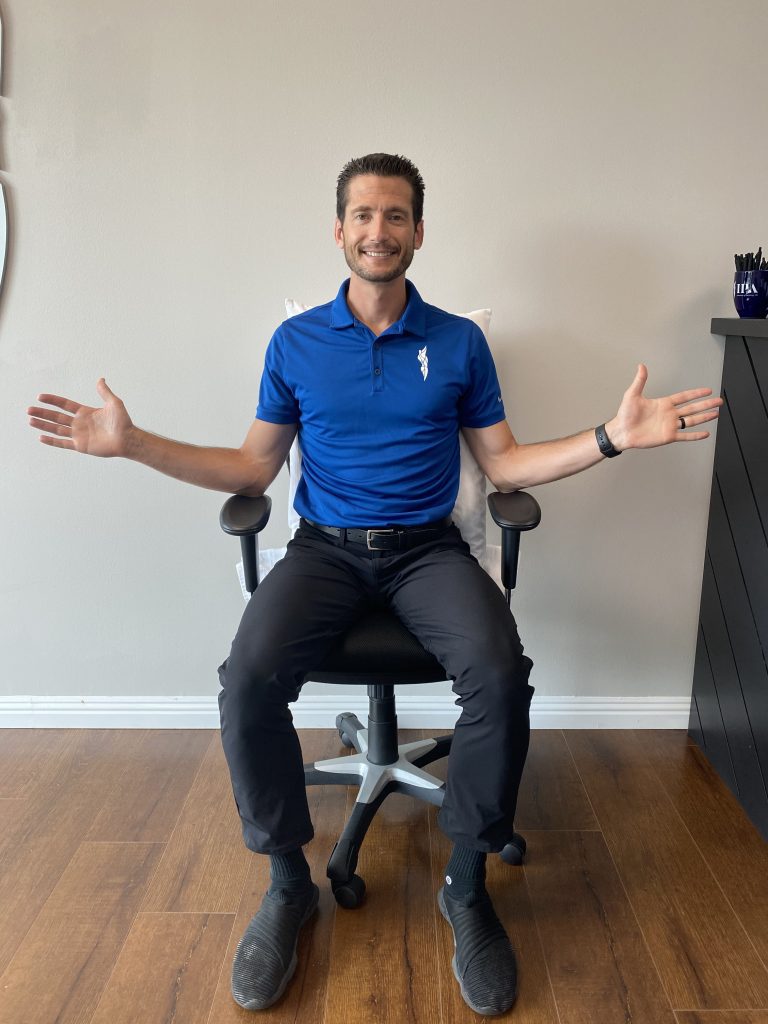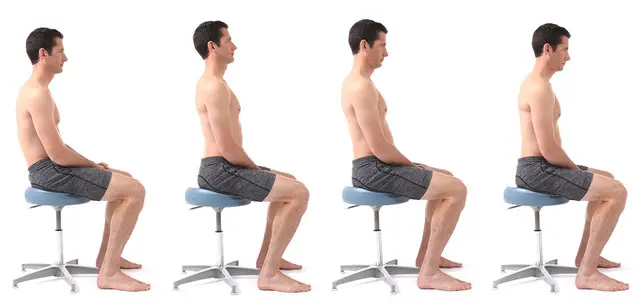Much of the following information was developed by Vicky Saliba Johnson, co-founder of the Institute of Physical Art.
People sit a lot. The average American sits 10 hours per day. That’s too much. While it is my personal opinion that we should decrease our time spent sitting, attempting to avoid sitting altogether seems unreasonable. Instead, we need to focus on how we sit. Below I will outline strategies to optimize your sitting posture. Efficient posture is balanced in relationship to gravity and maximizes load transfer and force production.
Sitting Alignment
In this blog I have separated sitting posture into two categories:
- Unsupported Sitting Posture, sitting without a chair-back for support
- Supported Sitting Posture, sitting with a chair-back for support
Unsupported Sitting
When sitting without the support of a chair-back, it is important to sit towards the front of the seat. More than half of the upper leg should be off of the seat surface. Also, the seat height should be slightly higher than your knees. The combination of these two variables will allow more weight to fall into the legs.
Finding one’s optimal alignment can be very nuanced. For the sake of keeping it simple, alternate slouching and sitting up tall a few times. Then come to rest in a comfortable middle position. We’ll call this your optimal vertical alignment.
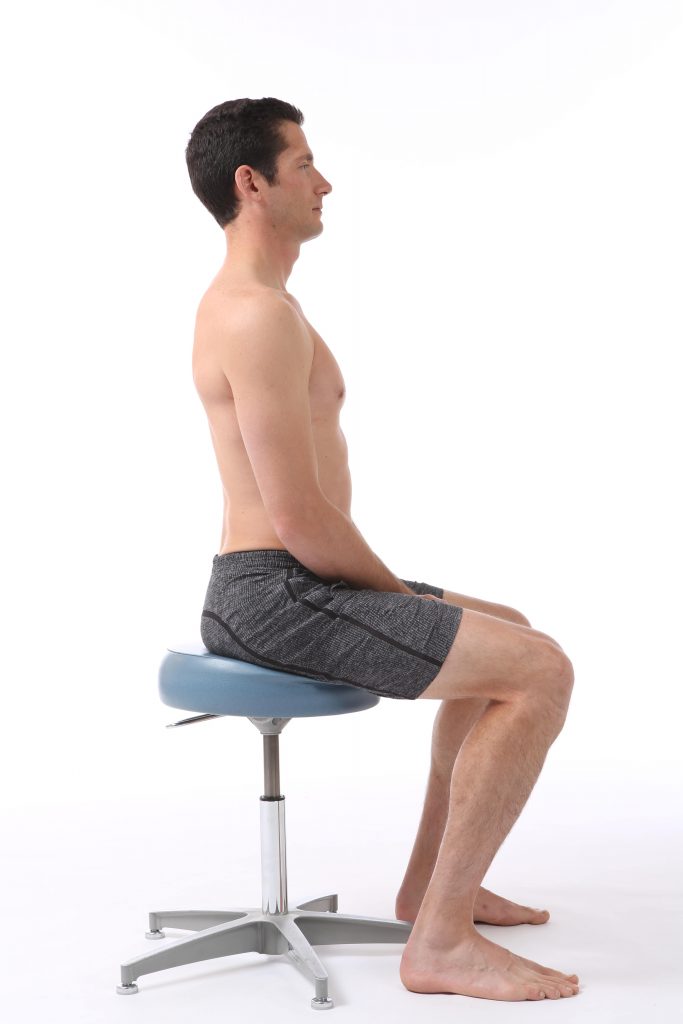

Now, how will you maintain that alignment? This is dependent on your base of support (BOS), the surface that holds up everything from below. In sitting, your BOS is the pelvis. The vast majority of people sit with their body weight aligned over the back of the pelvis. This is not balanced because the back of the pelvis is round.
If one sits with their body weight aligned (even optimally) over the back of the pelvis, they will have to hold themselves vertically through continuous effort by their back muscles, as seen in figure 1.
Otherwise, they will relax, as seen in figure 2, and fall into a slouched position. Again, this is because the back of the pelvis is round. A more balanced BOS is the middle/front of the pelvis. Weight-bearing should be felt throughout the pelvic floor, on the back of the upper thighs, and on the front edge of those sit-bones.
So, go ahead and alternate between slouching and sitting up tall again. This time, bring your alignment slightly forward until you feel your weight roll just off of the front edges of those sit-bones. If you did this without altering your spine alignment you should feel like you can relax without slouching and without continuous effort in your back (if this isn’t true you may have moved too far forward or altered your spine alignment).
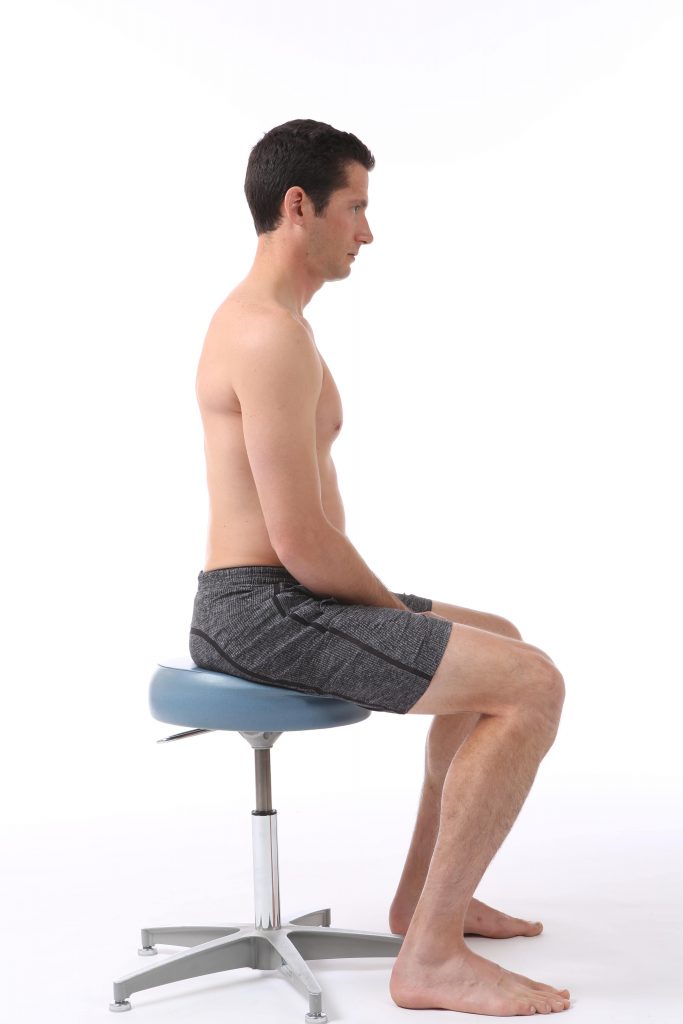
You should now feel slightly angled forward. This is a more balanced position in relationship to gravity. If you feel like you need some assistance maintaining this position because it is new, try the following:
-Breath into your stomach. This will help to ‘anchor’ you forward as your stomach expands forward.
-Slide one leg behind you. This will increase tension on the front of the thigh and help to ‘anchor’ you forward.
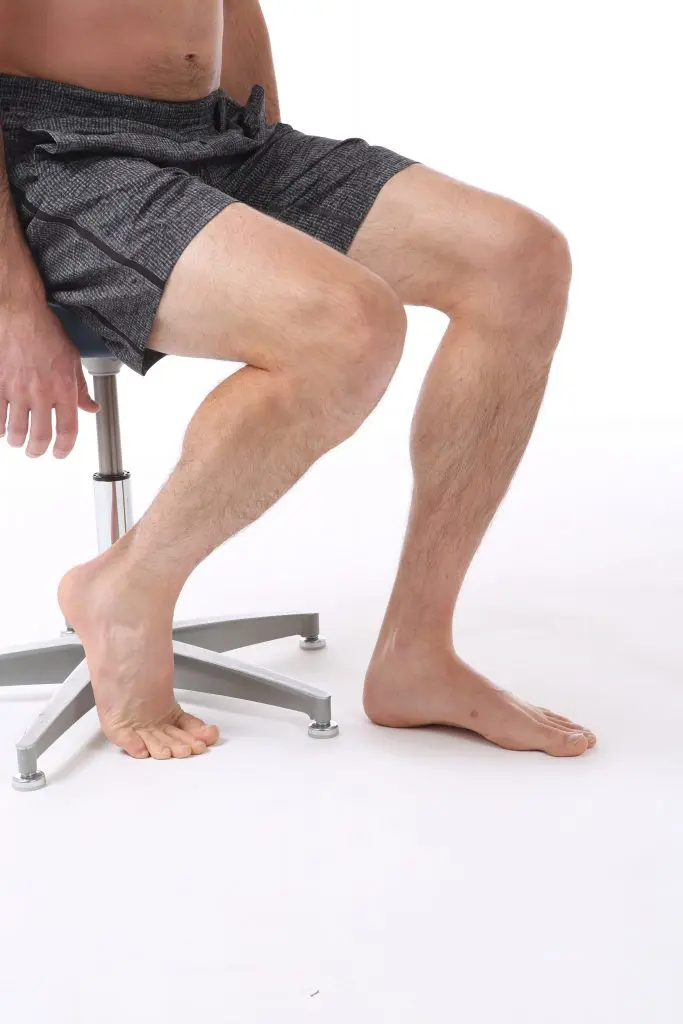
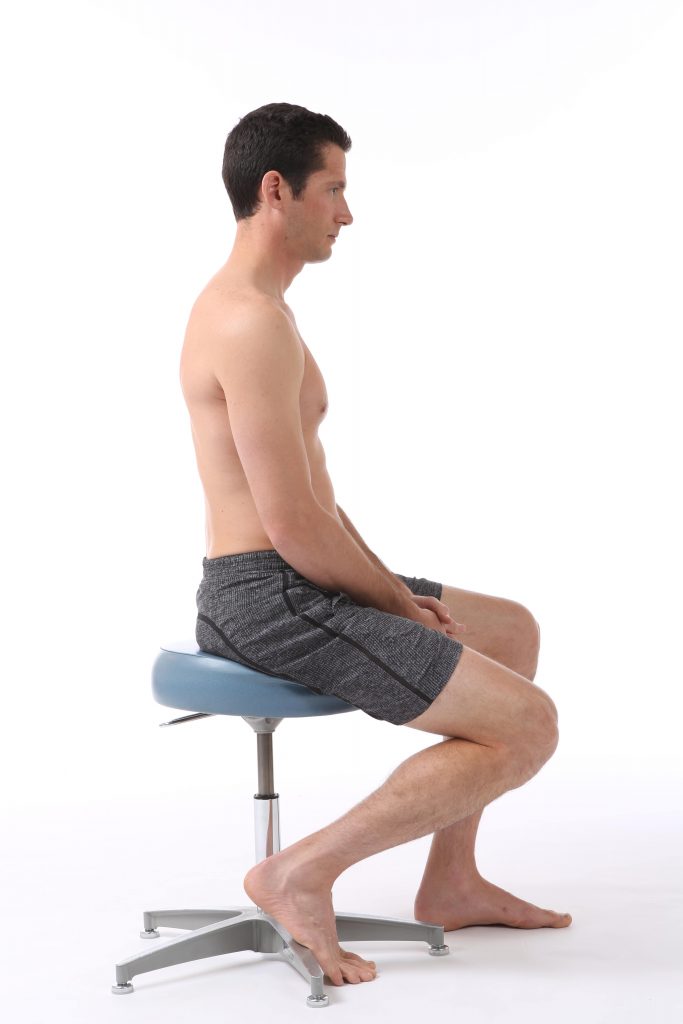
Now, to correct your shoulder position follow these steps shown here in standing. (The same can be performed in sitting):
*Do not alter the alignment of your spine while completing these steps:
- Gently shrug your shoulders.
- Rotate your palms and elbow creases forward (try to get little finger facing forward).
- Lower shoulders down until you feel the shoulders rest on the ribs.

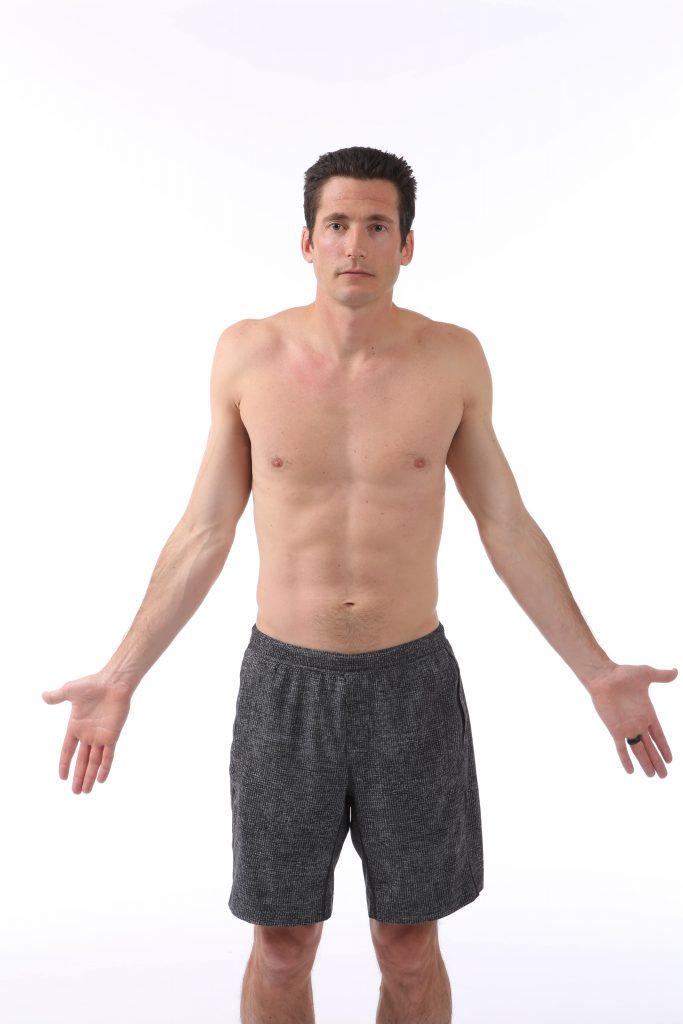

To correct your head and neck position, simply nod your head ‘yes’ a few times and stop in a comfortable, middle position. You may feel like you are looking out of the tops of your eyes, but this is only because you are used to looking out of the bottom of your eyes. This will become more comfortable with time.
Unsupported Sitting Posture Checklist
- Be sure the seat height is slightly higher than the knees
- Move towards the front of the seat surface
- Slouch and sit up tall, then stop in a comfortable middle alignment
- Roll over your hips to the front edge of the sit bones
- Relax, breath into your abdomen, and position one foot back to ‘anchor’ position
- Shoulder position: Shrug shoulders up, rotate palms forward, lower down
- Neck position: Nod ‘yes’ to position head/neck in comfortable, middle position
Supported Sitting:
Supported sitting implies using a chair back. The chair back is the primary support. However, ideally it should never be the only support. Let’s talk about how to optimally position yourself in supported sitting.
Begin by scooting to the back of the seat. Sometimes, if the seat surface is too deep, it is necessary to use a firm pillow against the backrest to shorten the depth of the seat. Once you position yourself against the back of the seat surface, alternate slouching and sitting up tall a few times. From this starting point, your feet MUST be contacting the floor. If they are not, then either use a pillow to shorten the seat depth, or place a support under the feet. Reams of paper work well for this.
Then come to rest in a comfortable middle position – your optimal vertical alignment. When you did this in unsupported sitting, your next step was hinging slightly forward at your hips onto your pelvic floor. In supported sitting, you should do the opposite. Reverse hip hinge until your back contacts the seat surface.
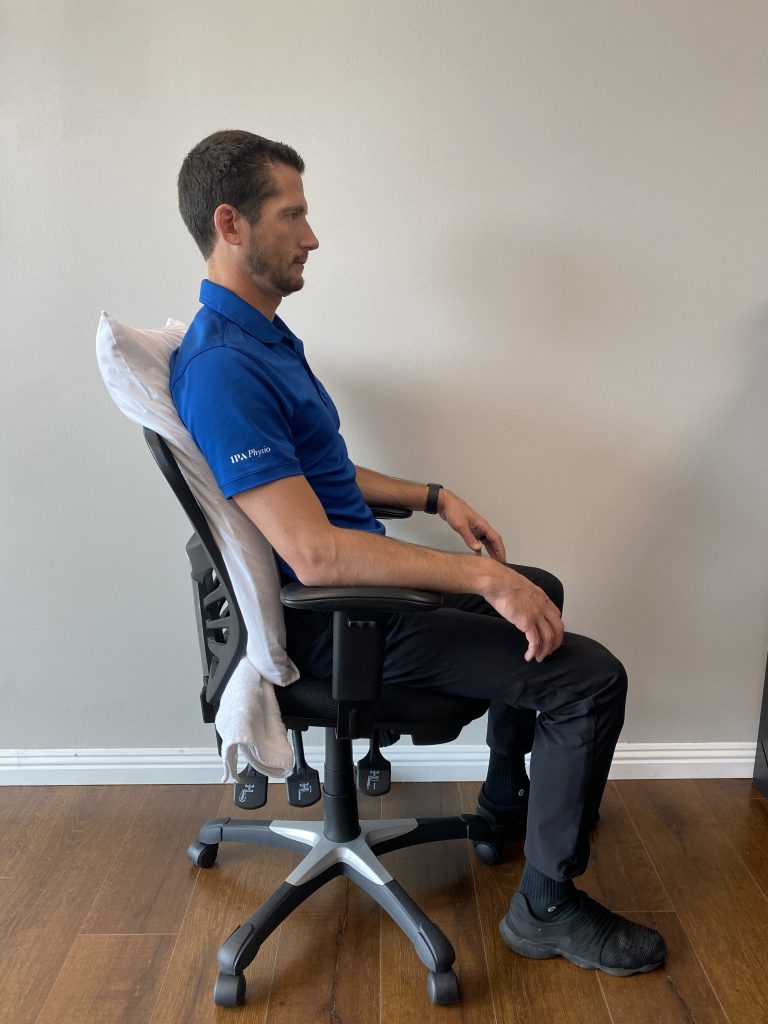
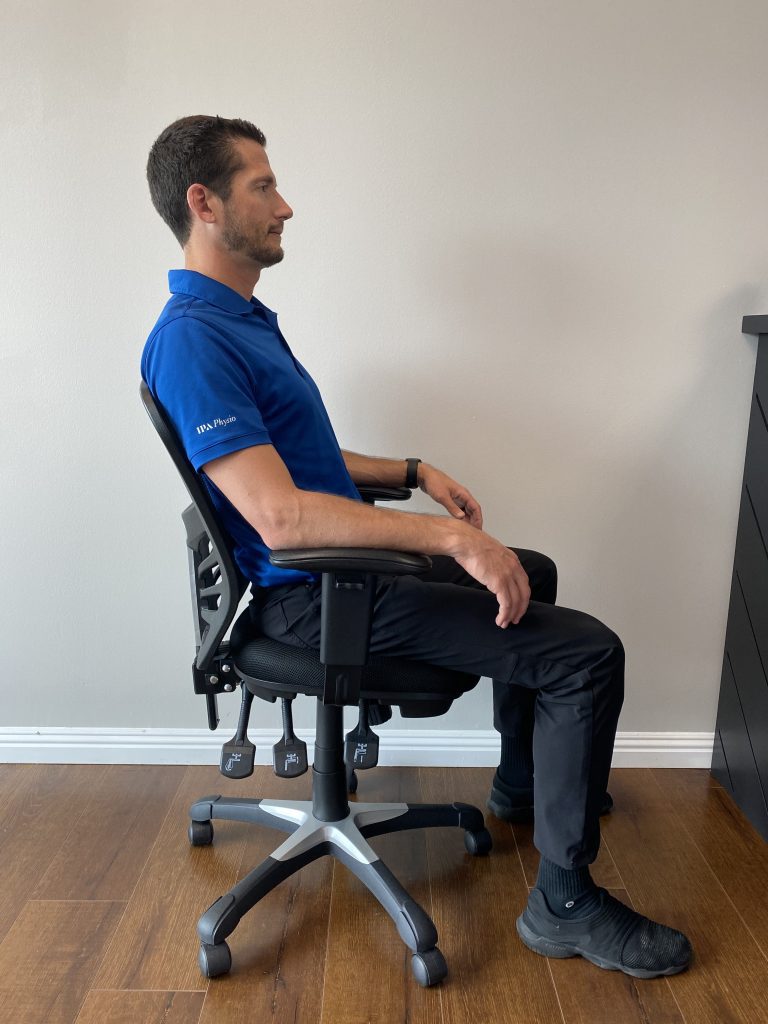

At this point, note areas of your back that are in contact with the chair back and areas that are not in contact with the chair back. Keep holding your optimal vertical alignment. Do not conform to your chair. The goal now is to conform your chair to YOU! Starting at the base, your pelvis, add supports that fill in the spaces. Thin towels work best for this. Do not roll the towels, as this will more than likely alter your optimal vertical alignment rather than support it .
We don’t often recommend the popular lumbar supports / McKenzie rolls because they often over-support the lumbar spine, altering alignment. They also leave the pelvis, the base, unsupported. If you use a lumbar roll and find it helpful, just be sure you are also filling in the space below it.
If your spine is supported in a way that allows you to maintain your optimal vertical alignment without effort and your feet are on the floor or on a support, you’re almost there!
Additionally, you must support your arms. You may need to use pillows on your lap to support your arms or modify your arm rests using towels or other objects if your chair does not have arm rests, if those arm rests are too wide, or if they not positioned appropriately for you. Moreover, the support should be directly under the elbow and start of the forearm. The height should allow your shoulder blades to rest comfortably down against your rib cage. Furthermore, to position your shoulders optimally, follow the ‘shrug up, rotate palms forward, lower down’ method mentioned above. Or, if the arm rests are in the way, rotate your hands out to the side with your elbows against your side (as pictured below). Then shrug your shoulders up and relax them down until you feel a comfortable stopping point. Finally, make sure your arm supports meet you there.
Please implement these principles into your sitting posture, and leave us comments and questions. Remember, don’t sit too much!
